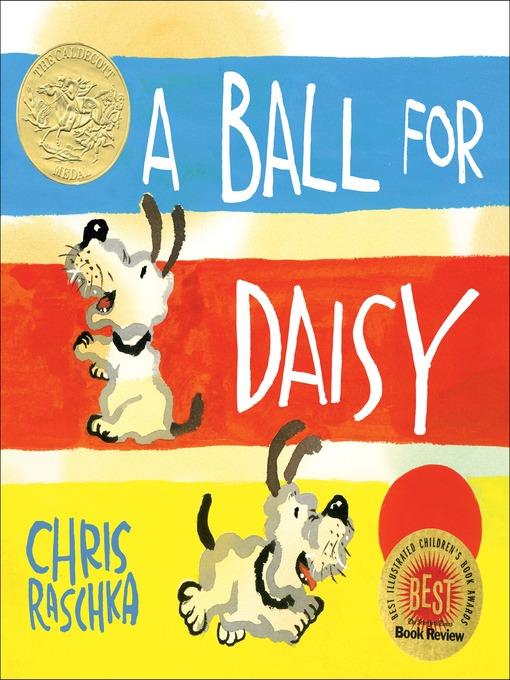
A Ball for Daisy
(Caldecott Medal Winner)
کتاب های مرتبط
- اطلاعات
- نقد و بررسی
- دیدگاه کاربران
نقد و بررسی

June 13, 2011
In a wordless book with gentle, dreamlike spreads, Daisy, a feisty, black-eared dog plays with a beloved red ball indoors and out, before a climactic encounter with another dog in the park. Working loosely in ink, watercolor, and gouache, Caldecott-winner Raschka (The Hello, Goodbye Window) alternates between large closeups of Daisyâcurled up with the ball on a sofa, looking nervous when the ball lands behind a fenceâand smaller panels for action scenes. Raschka conveys a bevy of canine moods (ecstatic, expectant, downtrodden) with brush strokes reminiscent of calligraphy, while the red ball adds striking contrast. When a brown dog causes the ball to pop, Daisy stares at it, nudges it, sniffs it, and shakes it in her mouth before gazing helplessly at her owner. But returning to the park later, Daisyâs forlorn expression turns gleeful as the same brown dog reappears with a blue ball, letting Daisy take it home. Readers should relate to Daisyâs sadness over the loss of her treasured object while understanding that such losses can sometimes lead to unexpected gainsâmaybe even a friend. Ages 3â7.

Starred review from August 1, 2011
PreS-Gr 2-Ever the minimalist, Raschka continues to experiment with what is essential to express the daily joys and tribulations of humans and animals. This wordless story features Daisy, a dog. The motion lines framing her tail on the first page indicate that a big red ball is her chief source of delight. Ever-changing, curvy gray brushstrokes, assisted by washes of watercolor, define her body and mood. Blue and yellow surround her ecstatic prance to the park with toy and owner. The story's climax involves another dog joining the game, but chomping too hard, deflating the beloved ball. A purple cloud moves in, and eight squares fill a spread, each surrounding the protagonist with an atmosphere progressing from yellow to lavender to brown as the canine processes what has occurred; a Rothko retrospective could not be more moving. Until that point, the action has occurred within varying page designs, many showing Daisy's shifting sentiments in four vertical or horizontal panels. Her attentive human's legs are glimpsed frequently, a sunny child whose warmth is transferred in comforting full view at bedtime. When another day dawns, the frisky dog's person proffers a blue surprise; the exuberance at having a ball and a friend is barely containable across two pages. Raschka's genius lies in capturing the essence of situations that are deeply felt by children. They know how easy it is to cause an accident and will feel great relief at absorbing a way to repair damage.-Wendy Lukehart, Washington DC Public Library
Copyright 2011 School Library Journal, LLC Used with permission.

June 1, 2011
Preschool-K This story about loss (and joy) is accomplished without a single word, which is perfectit puts you directly in the head space of its canine protagonist. The title tells us her name is Daisy, but she is a pretty anonymous little thing, drawn by Raschka as just a few indistinct yet somehow expressive squiggly lines. What's clear is that she loves playing with her ball, both indoors and out, until the fateful moment that another dog bites too hard on the ball and deflates it. In a heartaching series of nearly identical paintings, Daisy slumps into a sofa as depression overtakes her. Dogs, of course, don't know that there are more balls in the world, which makes her glee at the end of the book all the sweeter. Raschka uses fairly sophisticated comic-book arrangementslong, narrow, horizontal panels, and so forthbut masks them with soft watercolor edges instead of sharp corners. The result feels like something of pure emotion. Pretty close approximation of what it's like to be a dog, probably.(Reprinted with permission of Booklist, copyright 2011, American Library Association.)

























دیدگاه کاربران